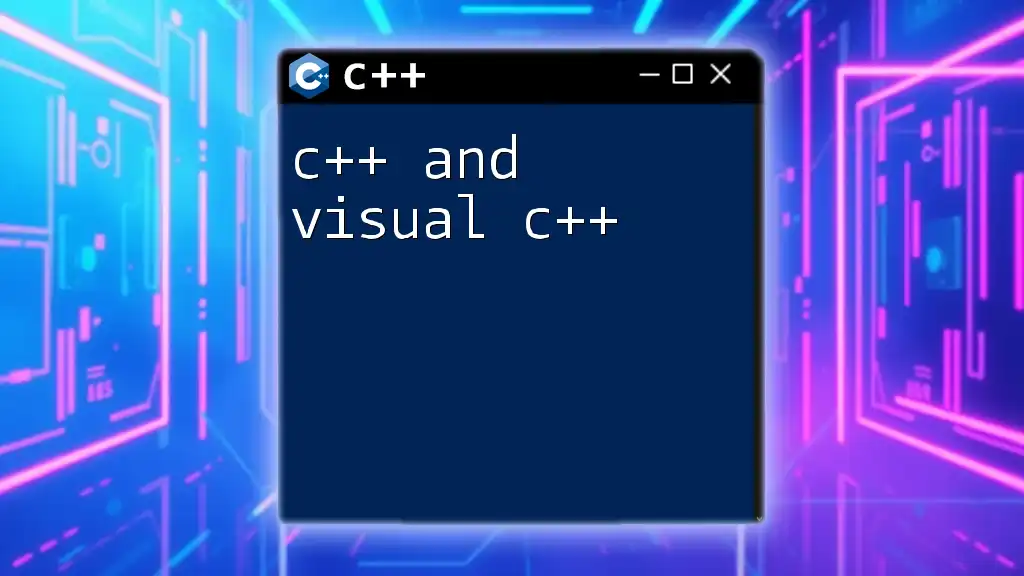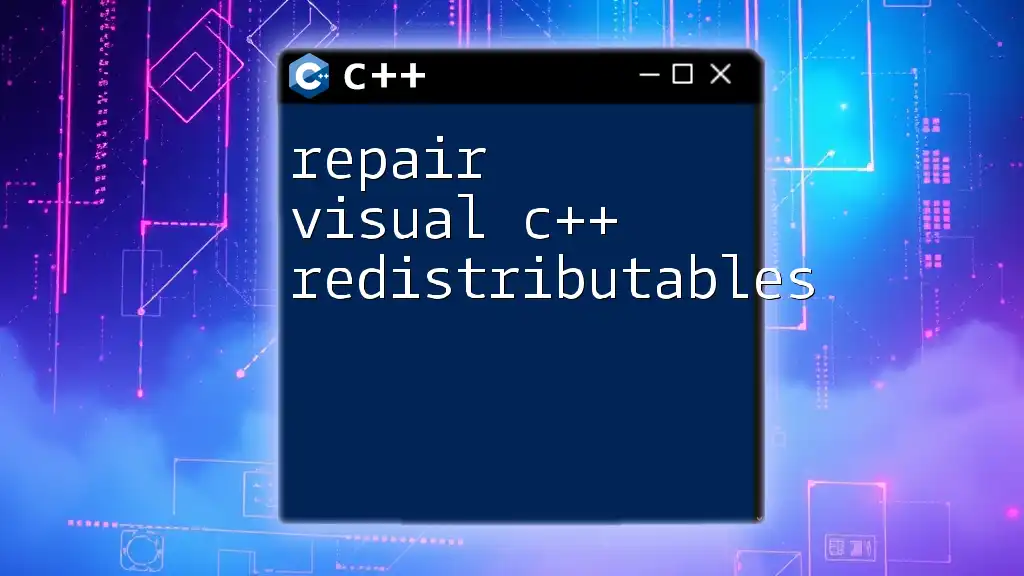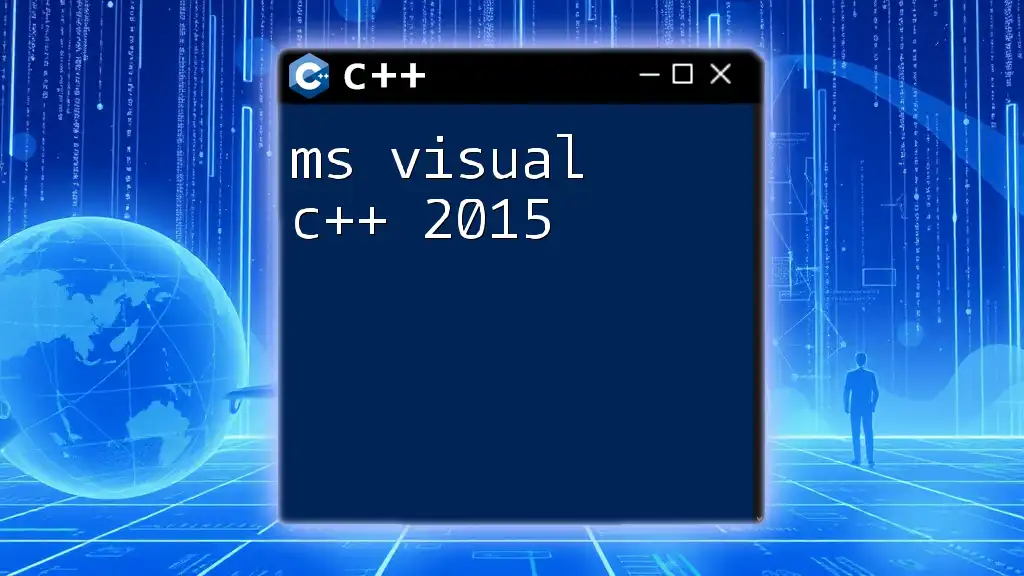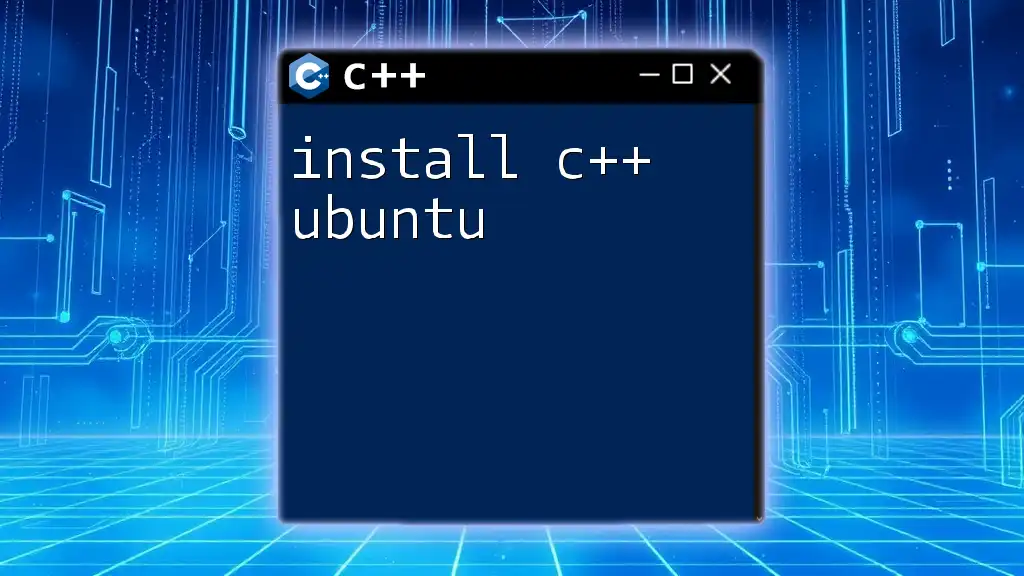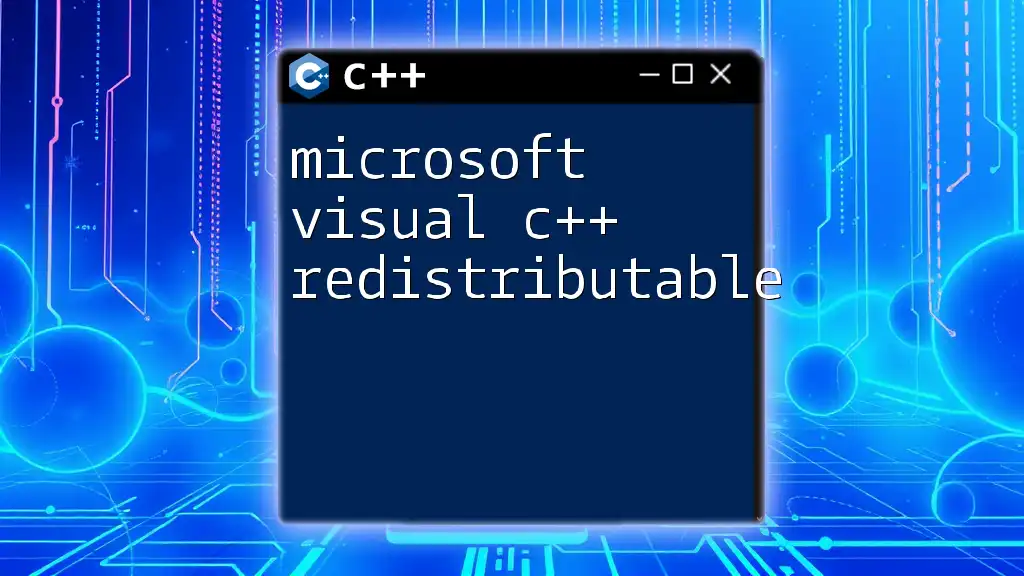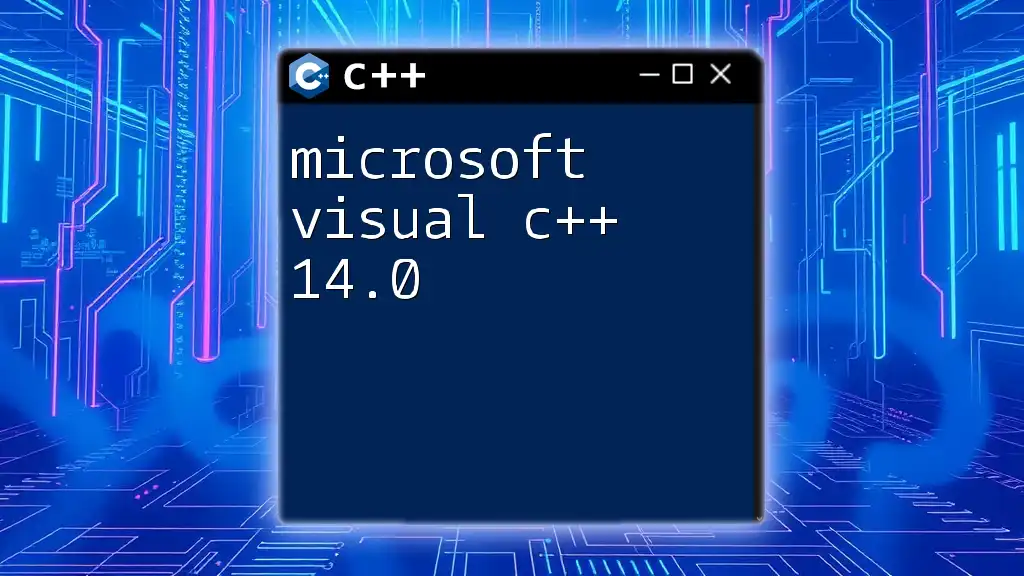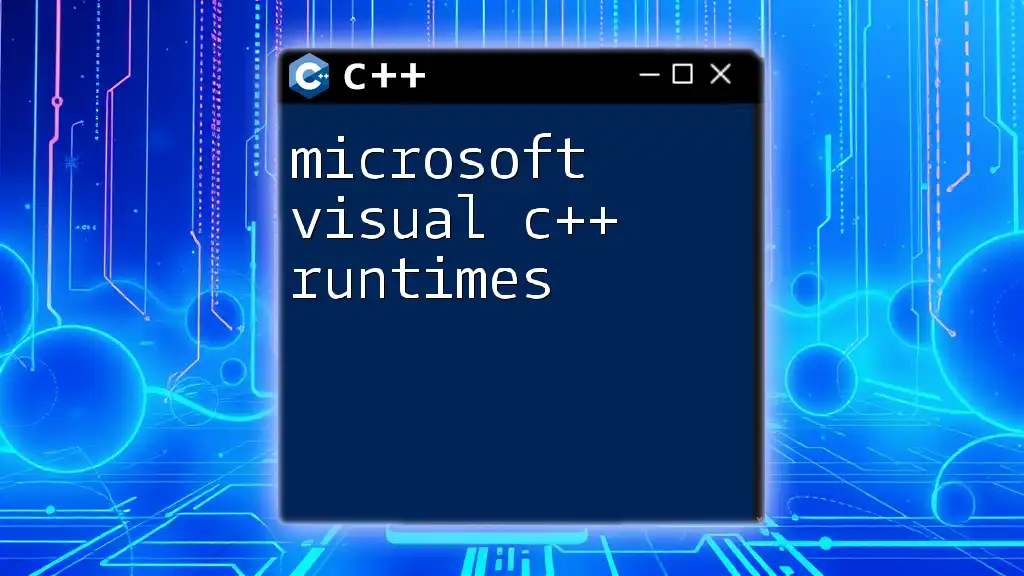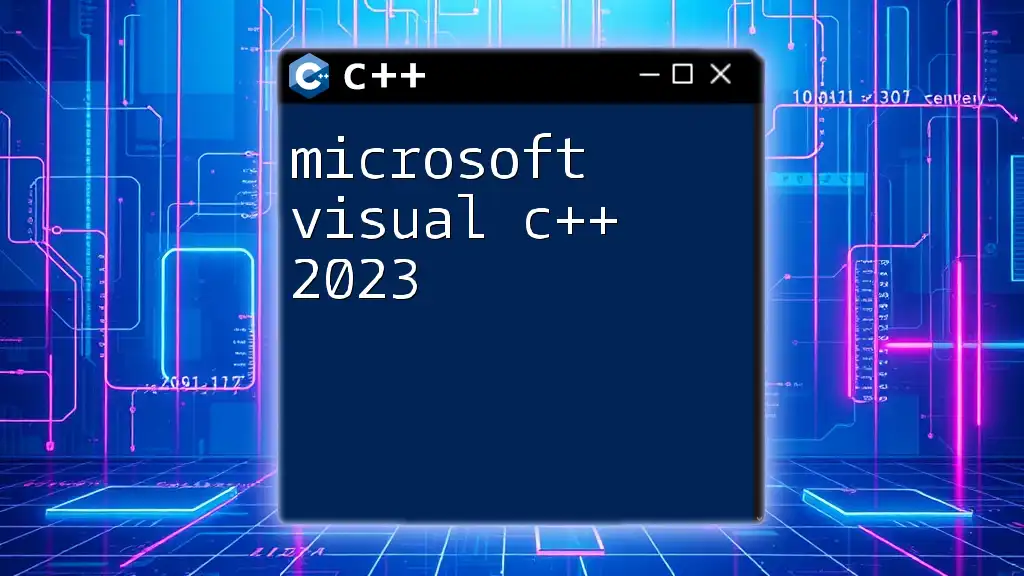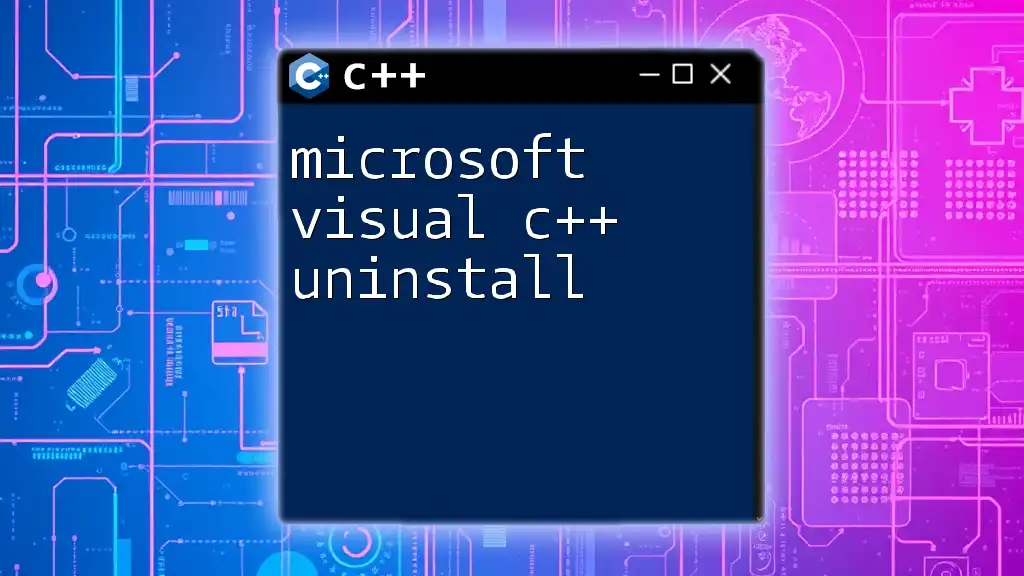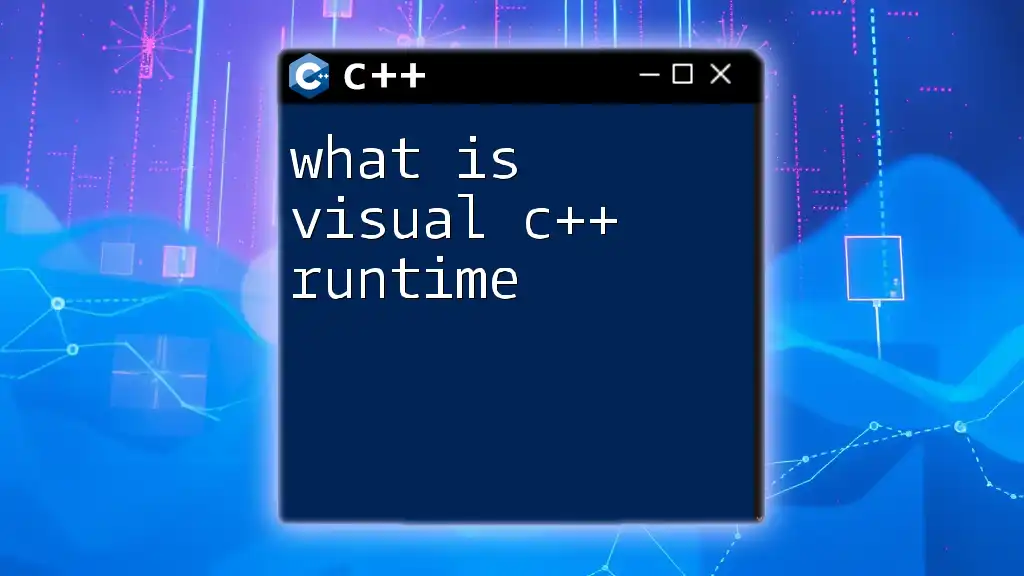To install Visual C++, download the Visual Studio Installer from the official Microsoft website, run it, and select the "Desktop development with C++" workload.
Here's a simple code snippet to check if Visual C++ is installed:
#include <iostream>
int main() {
std::cout << "Hello, Visual C++!" << std::endl;
return 0;
}
What is Visual C++?
Visual C++ is a powerful integrated development environment (IDE) provided by Microsoft that allows developers to create, edit, and debug applications written in the C++ programming language. It combines the rich features of C++ with productivity tools found in the Visual Studio suite, offering a coherent platform for both novice and experienced programmers. Visual C++ supports numerous features that facilitate integration with other languages and libraries, enabling the development of versatile applications.
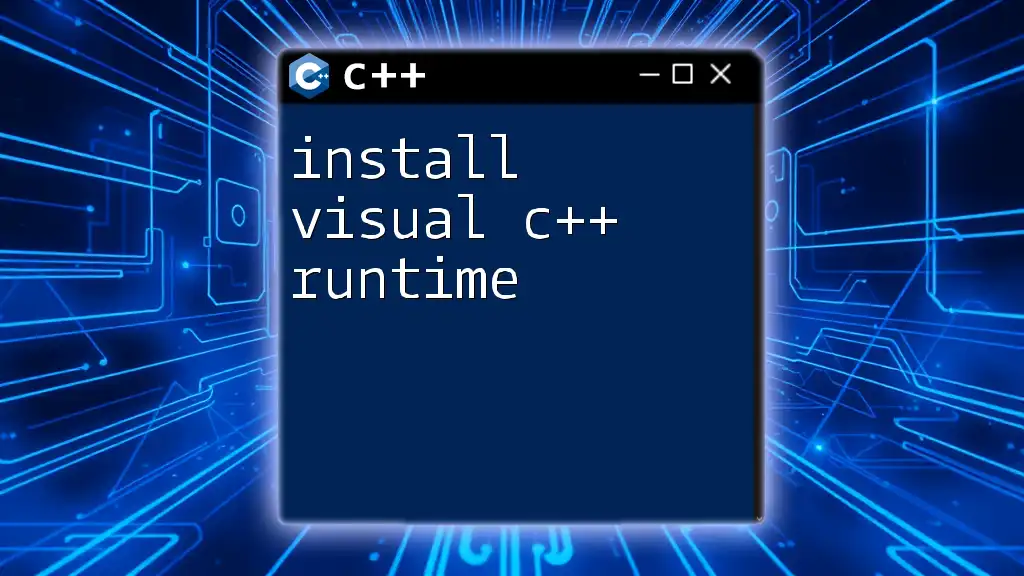
System Requirements
Minimum Requirements
Before you proceed to install Visual C++, it's crucial to ensure your system meets at least the minimum requirements. This will prevent any installation issues or performance problems later on.
- Operating System: Windows 10 or later versions are recommended. Older versions may also work, but Microsoft focuses on compatibility with the latest OS for security and performance.
- Hardware Specs: The bare minimum includes a 1.8 GHz or faster processor, 2 GB of RAM (though 4 GB is recommended), and 20 GB of available disk space for installation.
Recommended Requirements
For an enhanced development experience, especially if you plan on working with larger projects or using additional features, consider the following specifications:
- RAM: 8 GB or more.
- Disk Space: An SSD (Solid State Drive) is highly recommended for faster read/write speeds, especially with larger projects.
- Processor: A multi-core processor capable of supporting multi-threaded applications will significantly improve performance.

Downloading Visual C++
Official Sources
The safest way to download Visual C++ is from the official Microsoft Visual Studio website. Here’s how to do it:
- Visit the [Microsoft Visual Studio website](https://visualstudio.microsoft.com/).
- Navigate to the Download section and select the appropriate version, typically the latest stable release suitable for your needs.
By downloading from the official site, you ensure that you receive the most secure and up-to-date version of Visual C++.
Alternative Sources
While it’s strongly advised to stick with official sources to mitigate security risks, some reputable third-party platforms might offer the installation file. Always prioritize integrity and security by checking reviews and ensuring the legitimacy of these sources.

Installation Steps
Step-by-Step Installation Process
Downloading the Installer
After navigating to the official site, you will download the Visual C++ installer. It’s typically a small file that, when run, will initiate the larger installation process.
Running the Installer
Once the installer is downloaded, locate it in your downloads folder and double-click to run. Follow these instructions:
- If prompted by User Account Control, click "Yes" to allow the installer to run.
Selecting Components
As the installer progresses, you will see various workload options. This can be overwhelming for new users, so here’s a recommendation:
- Select "Desktop Development with C++" to install the most relevant components for general C++ development.
Configuring Installation Settings
At this stage, you'll have the option to customize your installation. If preferred, you can choose a different path to install Visual C++ by clicking on the “Installation locations” link. It’s better to choose the default location unless you have specific needs.
Completing the Installation
Click the Install button to begin the actual installation process. Depending on your internet speed and the components selected, this might take several minutes. Once completed, you will see a confirmation message.
Post-Installation Setup
Setting Up the Environment
In some cases, you may need to configure environment variables, especially if you want to use command-line tools or third-party libraries. This step is generally not required for beginners but can be useful as your project demands grow.
Update Visual C++
After installation, it’s important to keep Visual C++ updated for performance improvements and security patches. To check for updates:
- Launch Visual Studio.
- Navigate to Help > Check for Updates.
This will ensure you have the latest features and fixes.
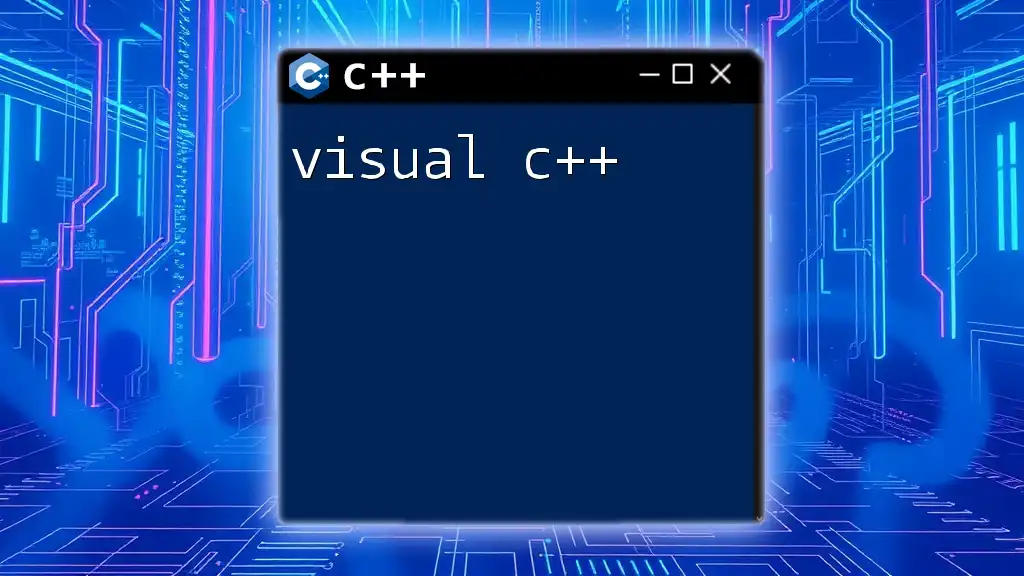
Verifying Installation
Opening Visual C++
To verify that you have successfully installed Visual C++, open the application from your start menu. If everything is set up correctly, the welcome screen should appear.
Creating a New Project
To validate functionality, you can create a simple "Hello World" project:
- Click on Create a new project.
- Select Console App under the C++ category.
- Name your project and choose a convenient location for it.
- Click Create.
Insert the following code snippet to display "Hello, World!" on the console:
#include <iostream>
int main() {
std::cout << "Hello, World!" << std::endl;
return 0;
}
Compile and run the project using the Run button in the toolbar. If it works correctly and outputs "Hello, World!", your installation is successful!
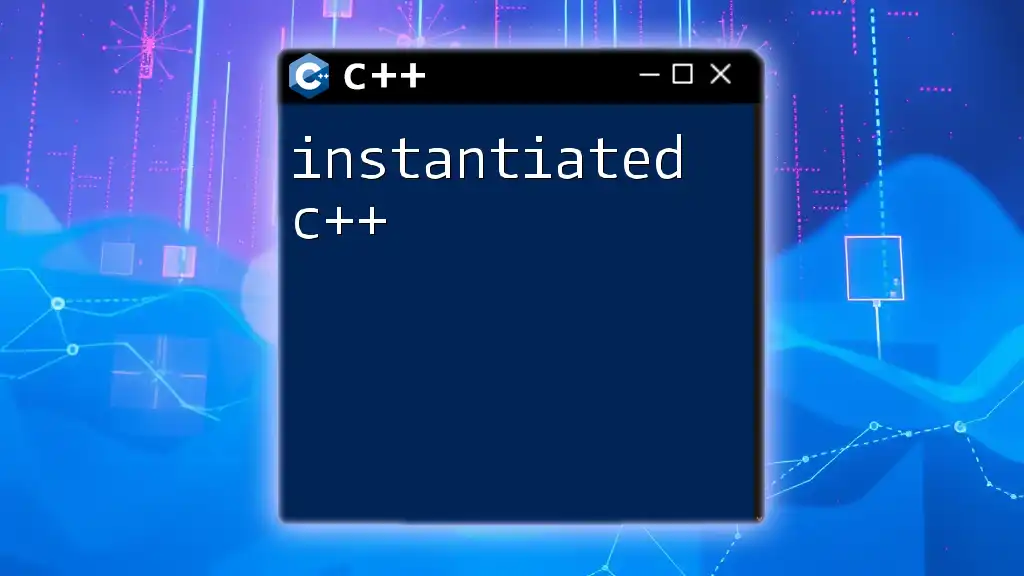
Troubleshooting Common Issues
Installation Errors
If you encounter errors during installation, consider checking for:
- Missing Dependencies: The installer may require specific components that are not present on your machine.
- Disk Space: Lack of sufficient disk space can halt the installation.
Running Software After Installation
In case Visual C++ does not launch correctly, check the following:
- Configuration Settings: Ensure that your computer meets all necessary requirements.
- User Permissions: Sometimes administrative privileges are required for applications to run properly.
Seeking Further Assistance
If problems persist, numerous resources can help you troubleshoot, including:
- [Microsoft Developer Community](https://developercommunity.visualstudio.com/spaces/21/index.html)
- Programming forums like Stack Overflow for user-generated solutions.
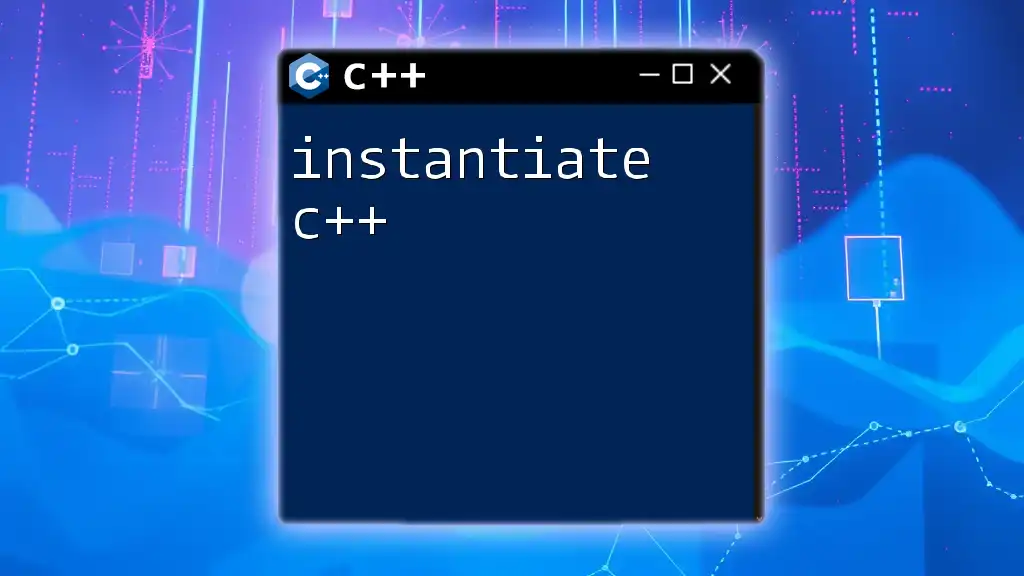
Conclusion
Successfully installing Visual C++ is a vital step for anyone looking to delve into C++ programming. This guide should empower you to install Visual C++ with confidence, paving the way for you to explore its capabilities further. Don't hesitate to take your first project and start coding; the Visual C++ community awaits your contributions!

Additional Resources
Recommended Tutorials and Documentation
For continuous learning, it's beneficial to engage with:
- [Microsoft Docs](https://docs.microsoft.com/en-us/cpp/overview?view=msvc-160) for official guidelines and best practices.
- Online tutorials and courses that focus on C++ specific topics.
Community Links for Support
Engaging with communities can enhance your learning journey:
- Stack Overflow for quick answers to specific queries.
- Reddit's programming schools where fellow learners share advice and resources.
Your journey into the world of C++ programming starts with a solid installation of Visual C++, and with these resources, you are well-equipped to tackle any challenges that come your way!







